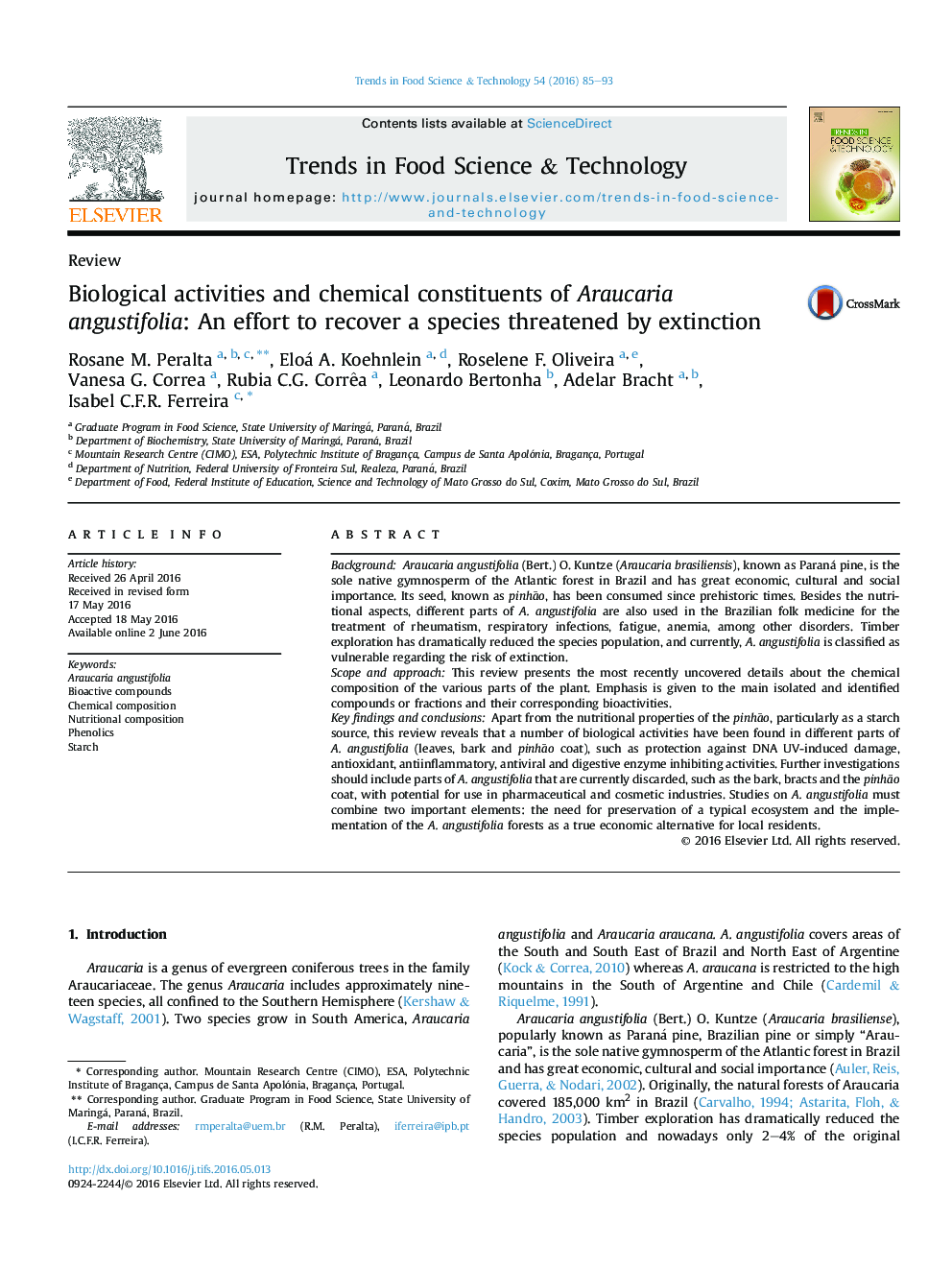| Article ID | Journal | Published Year | Pages | File Type |
|---|---|---|---|---|
| 2098498 | Trends in Food Science & Technology | 2016 | 9 Pages |
•Araucaria angustifolia is an extinction threatened conifer native to Southern Brazil.•Pinhão is rich in starch and used in regional dishes.•Different parts of A. angustifolia are used in the Brazilian folk medicine.•Biflavonoids and tannins have been identified in leaves, barks, bracts and coats.•Barks, bracts and coats are potential sources of pharmaceutics and cosmetics.
BackgroundAraucaria angustifolia (Bert.) O. Kuntze (Araucaria brasiliensis), known as Paraná pine, is the sole native gymnosperm of the Atlantic forest in Brazil and has great economic, cultural and social importance. Its seed, known as pinhão, has been consumed since prehistoric times. Besides the nutritional aspects, different parts of A. angustifolia are also used in the Brazilian folk medicine for the treatment of rheumatism, respiratory infections, fatigue, anemia, among other disorders. Timber exploration has dramatically reduced the species population, and currently, A. angustifolia is classified as vulnerable regarding the risk of extinction.Scope and approachThis review presents the most recently uncovered details about the chemical composition of the various parts of the plant. Emphasis is given to the main isolated and identified compounds or fractions and their corresponding bioactivities.Key findings and conclusionsApart from the nutritional properties of the pinhão, particularly as a starch source, this review reveals that a number of biological activities have been found in different parts of A. angustifolia (leaves, bark and pinhão coat), such as protection against DNA UV-induced damage, antioxidant, antiinflammatory, antiviral and digestive enzyme inhibiting activities. Further investigations should include parts of A. angustifolia that are currently discarded, such as the bark, bracts and the pinhão coat, with potential for use in pharmaceutical and cosmetic industries. Studies on A. angustifolia must combine two important elements: the need for preservation of a typical ecosystem and the implementation of the A. angustifolia forests as a true economic alternative for local residents.
Graphical abstractFigure optionsDownload full-size imageDownload as PowerPoint slide
